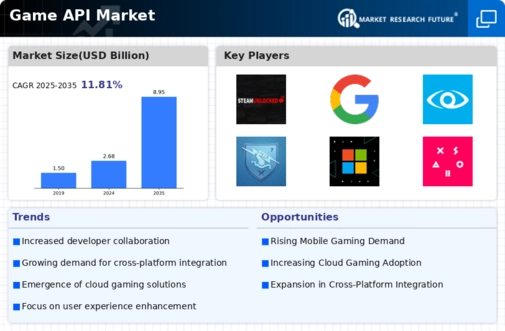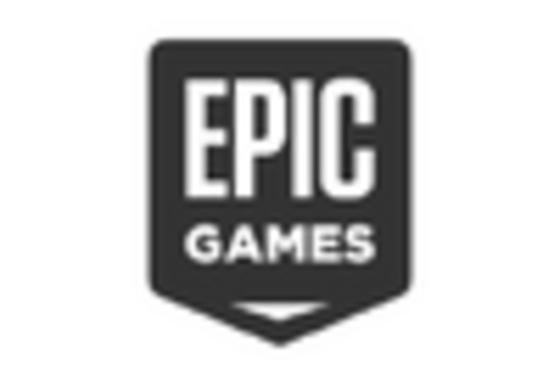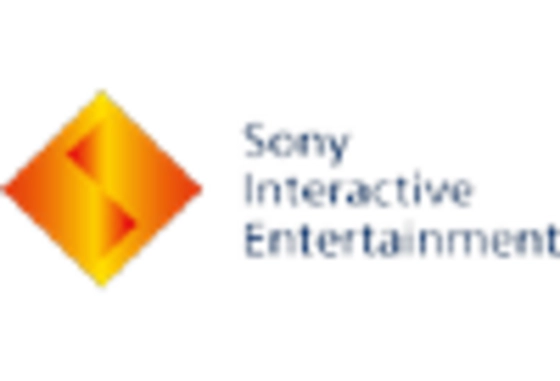Emergence of Cloud Gaming
The Game API Market is significantly influenced by the rise of cloud gaming services. As players increasingly prefer streaming games over traditional downloads, the demand for APIs that support cloud infrastructure is on the rise. In 2025, the cloud gaming market is expected to surpass 20 billion dollars, highlighting the potential for growth in this sector. APIs that enable real-time data processing and low-latency interactions are essential for delivering a satisfactory gaming experience. This shift towards cloud-based solutions necessitates the development of robust APIs that can handle the complexities of cloud gaming, thereby propelling the Game API Market forward. Companies that adapt to this trend may find lucrative opportunities in providing the necessary tools for developers.
Growing Popularity of Esports
The Game API Market is significantly impacted by the growing popularity of esports. As competitive gaming continues to attract millions of viewers and participants, the need for APIs that support tournament management, player statistics, and real-time data analytics becomes increasingly critical. In 2025, the esports market is expected to exceed 1.5 billion dollars, underscoring the potential for growth in this area. APIs that can provide reliable and efficient data handling are essential for creating engaging esports experiences. This trend encourages API developers to focus on creating solutions that cater specifically to the needs of the esports community, thereby driving innovation within the Game API Market.
Rising Demand for Mobile Gaming
The Game API Market experiences a notable surge in demand for mobile gaming solutions. As mobile devices become increasingly powerful, developers seek APIs that facilitate seamless integration and enhance user experiences. In 2025, mobile gaming revenue is projected to reach approximately 100 billion dollars, indicating a robust growth trajectory. This trend compels API providers to innovate and offer solutions that cater to mobile platforms, ensuring compatibility and performance. The proliferation of mobile gaming applications drives the need for efficient backend services, which in turn fuels the Game API Market. Consequently, companies that can deliver high-quality, scalable APIs are likely to gain a competitive edge in this expanding market.
Increased Focus on Cross-Platform Play
The Game API Market is experiencing a shift towards cross-platform play, allowing gamers to interact regardless of their device. This trend is driven by consumer demand for flexibility and inclusivity in gaming experiences. As of 2025, it is estimated that over 70% of gamers prefer titles that support cross-platform functionality. This necessitates the development of APIs that can seamlessly connect different gaming ecosystems, ensuring a unified experience. The ability to facilitate cross-platform interactions is likely to enhance player engagement and retention, thereby propelling the Game API Market forward. Companies that prioritize cross-platform capabilities in their API offerings may find themselves at a competitive advantage in this evolving landscape.
Integration of Augmented and Virtual Reality
The Game API Market is witnessing a transformative phase with the integration of augmented reality (AR) and virtual reality (VR) technologies. As these immersive experiences gain traction among gamers, the demand for specialized APIs that support AR and VR functionalities is increasing. In 2025, the AR and VR gaming market is projected to reach 15 billion dollars, indicating a substantial opportunity for API developers. These APIs must facilitate complex interactions and provide seamless integration with existing gaming platforms. The ability to create engaging and interactive experiences through AR and VR is likely to drive the growth of the Game API Market, as developers seek to leverage these technologies to enhance gameplay and user engagement.


















Leave a Comment